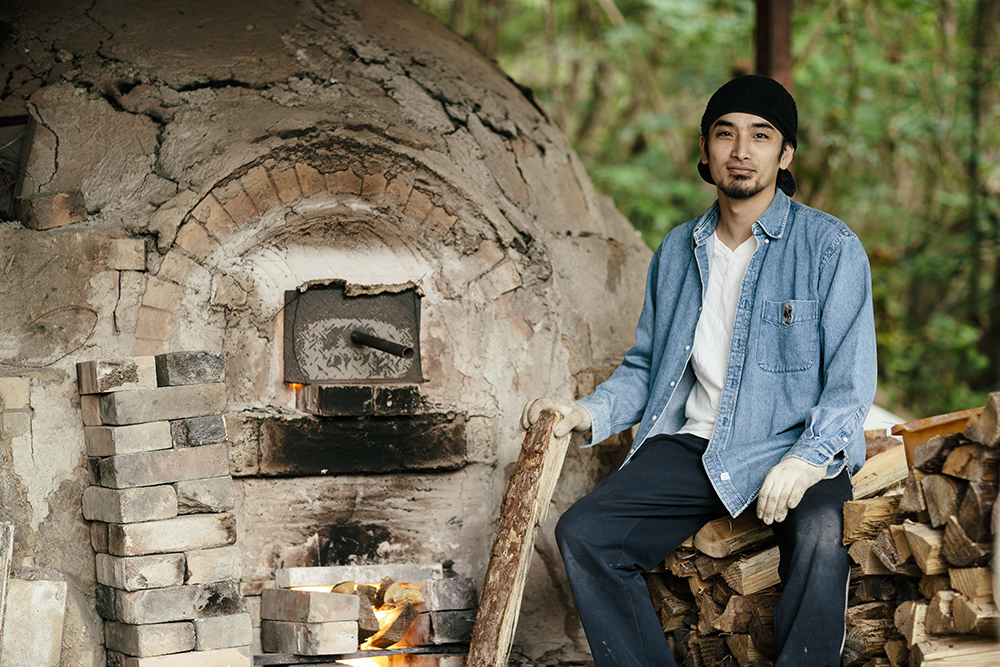Travelogue about Japanese Arts and Crafts
09.02.24
We've just returned from a long trip to Japan, a country where we lived almost 30 years ago—an eternity! We needed to go back to the place where we met. Where it all began, where our eldest daughter, Naomi, was born. We needed to rediscover the essence of our shared passion, understand our quest for aesthetics, our dedication to craftsmanship and service, our admiration for age-old artisanal traditions, and above all, rediscover the evocative power of nature in the arts.
A trip to Japan to discover Japanese arts and crafts
We met up with Emma, our youngest, who had been living there for a year with artisans passionate about their ancestral craft, in Wajima on the Noto peninsula with an admirable woman who mastered lacquer, in Bizen near Okayama with Taiga san, a pottery artist, in Kyoto to participate in the restoration of an old Kominka (Japanese house).
The wish was to travel far into the heart of rural, artisanal Japan, still untouched by homogenization and globalization; to leave behind our comforts and habits, to be swept away by the well-being of the onsen, while respecting the etiquette of these hot springs. To be captivated by the simplicity of our rooms in the ryokans and ultimately appreciate the firmness of our bed on the tatami mats. To have fun like children wearing the yukata, the traditional garment, to dinner, served like royalty with a continuous parade of delicious dishes, presented with meticulous attention to harmony and visual appeal.
It was impossible for us to return to Paris empty-handed and this trip was also an opportunity to find some treasures in Matsuyama and Kyoto, but also and especially in Bizen from talented artists whom we were able to observe in the midst of creation in their workshops.
Creations by the pottery artists of Bizen, Baba Takashi and Mori Taiga - Japan - Contemporary art objects
Bizen pottery in Japan
The Bizen pottery in Japan, made from the Kamakura period (1185-1338), is characterized by its reddish-brown color and a deposit of ash covering it, reminiscent of goma or sesame seeds.
Later, they became very popular for their superb quality clay, modest appearance, durability, and ability to preserve water quality. During the Momoyama period (1573-1600), a gigantic kiln measuring 50 meters long by 5 meters wide was built in Bizen, and it was during this time that the masterpieces of tea ceremony pottery were created. Bizen pottery pieces are placed unglazed in a pine-fired kiln for 8 to 20 days. When the temperature reaches 1250°C, pine ash falls back onto the pieces, coating them with a natural glaze in different shades on each piece. Those fired under optimal conditions have a robust and heavy appearance with a natural texture and a restrained elegance. Bizen pottery is said to be modest and understated, yet full of refinement, reflecting the spirit of Japan. The commune of Bizen is located in Okayama Prefecture and the clay collected from the commune's rice paddies is of excellent quality and allows pottery artists to create exceptional works.
So we brought back from Japan a magnificent Bizen pottery basin and a sculptural soliflore made by the artist Taiga Mori, a large decorative dish made by the artist Baba Takashi, and a magnificent Bizen pottery vase
Japanese vase - Shibuta Toshiaki
Bizen pottery basin, Japan - Mori Taiga
Large Bizen pottery dish - Baba Takashi
Meeting with Japanese artisans
During our trip we had the opportunity to meet several pottery artisans:

Mori Taiga was born in 1974 in Inbe, Bizen commune, and took over the kiln (Fuurai) from his grandfather, himself from a long family tradition of potters in Bizen. Taiga has exhibited his work around the world and participated in the construction of an Anagama kiln in France at the La Tuilerie Ecomuseum in Pouligny.

Baba Takashi was born in 1983 and is the son of artist Shosuke Baba. He studied at the Tokyo University of the Arts and quickly expressed his talent with exhibitions in Japan, as well as in China and London.
Shibuta Toshiaki was born in 1957 in Hyogo, Japan. He began working in Bizen in 1983 and has since received numerous awards, notably at exhibitions at the Tanabe Art Museum dedicated to the Japanese tea ceremony. He participated in the construction of an Anagama kiln in France at the La Tuilerie de Pouligny Ecomuseum, where he taught the ancient techniques of unglazed firing.





